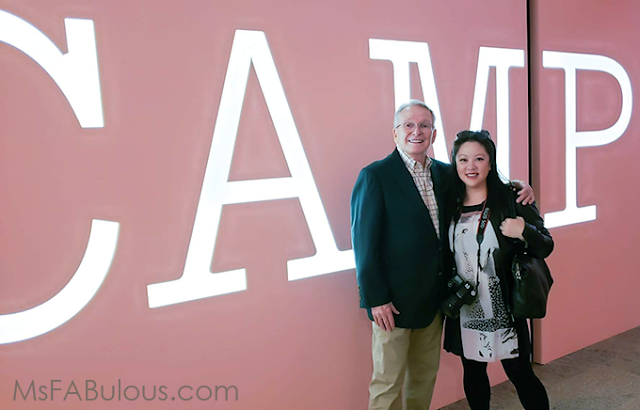What is Met Camp? No, it is not a pretentious summer getaway for the fashionably inclined. The Met Gala 2019 exhibit titled Camp: Notes on Fashion explored the various themes of what makes fashion campy based on the ideas put forth in Susan Sontag's essay. Sontag describes camp as “something of a private code, a badge of identity . . . among small urban cliques.”
The curators and directors at the Metropolitan Museum of Art put together a beautiful collection of pieces they consider display the "camp aesthetic." Gender role subversions were a constant theme, from historic female impersonators to drag to emphasizing genitals like Christopher Kane's bodysuits to none at all. If there were a mascot for camp, a drag queen would probably be it. There were glammed up wigs and accessories on display.
While female impersonator Frederick Park from 1868 was credited early on in the exhibit, icons of modern camp aesthetic like Divine, RuPaul, John Waters, legendary performers of drag balls in Harlem, etc. were not acknowledged except for a video clip of Willy Ninja's Deep in Vogue. At least Met Gala guest Lena Waithe sought to correct that with her suited look with "Black Drag Queens Invented Camp" embroidered on the back. Pose's Billy Porter arrived at the gala carried on a platform in full glittering Egyptian God glory. At least ONE look from Dapper Dan was represented at the exhibit. The Met still struggles with diversity and inclusion with both their guest lists and catalog, but at least they are trying with baby steps.
High-end responses to pop culture, from Japanese designer Undercover's beautiful rendition of the twins from The Shining to Heatherette's dress of Hello Kitty dolls. Moschino featured heavily, as did Vivienne Westwood and John Galliano. Bob Mackie (pictured with me below) is a master costume designer who created many of the iconic looks of performers that defined camp as well. Some designer vignettes, like the "Artifacts Past Its Prime" looked very pretty, but I didn't see what was considered campy about them. Balenciaga and Gucci (main sponsor of the show) pieces were beautifully pieced floral looks, but how were they counter-culture to anything?
Personally, I believe what is considered camp is more a mindset than a defined aesthetic, and traditionally, it is the opposite of tasteful, expensive and Haute Couture. It is often a satire, a parody, a vulgar response to the establishment. Designers that an overwhelming percentage of society cannot afford is hardly the most inclusive representation of that. I would have loved to see examples of homemade costumes and looks of individual artists, drag queens, who were truly making a statement as art were represented, instead of just commercial collections. The fans lined up outside across from the museum, barricaded behind gates hoping to see their favorite celebs on the (pink) carpet sported DIY looks that were in the true spirit of the theme in contrast to the designer-clad editors at the press preview.
The Met Camp: Notes on Fashion exhibit was another glossy, gorgeous themed fashion of the elite designers of the last century. A triumph for the team behind it, putting a commoner's idea on a pedestal.







No comments:
Post a Comment